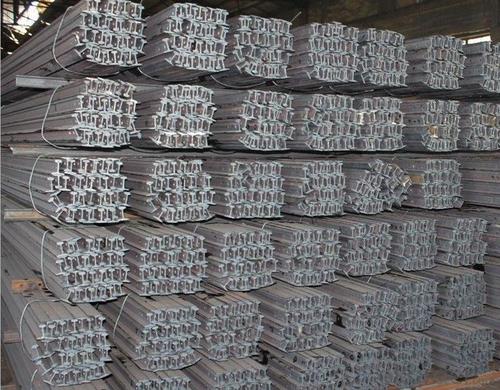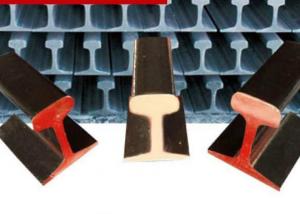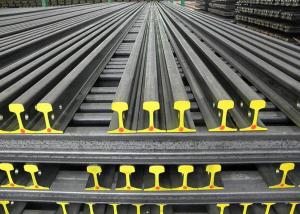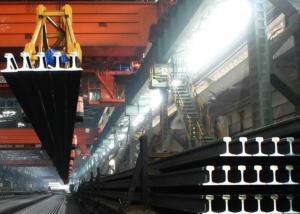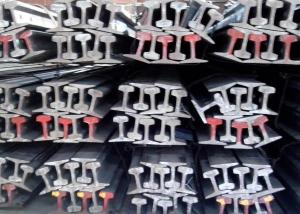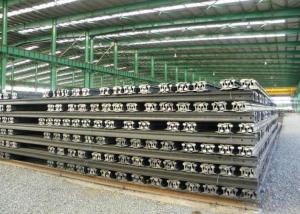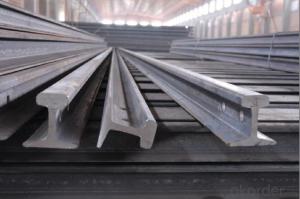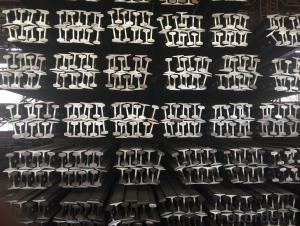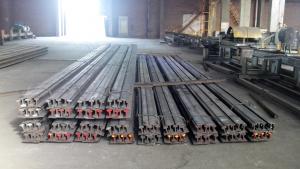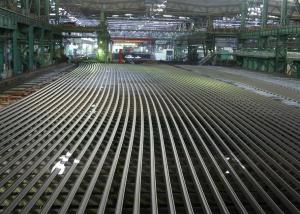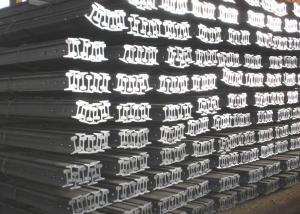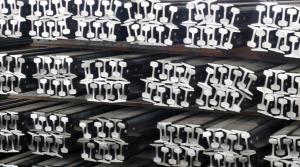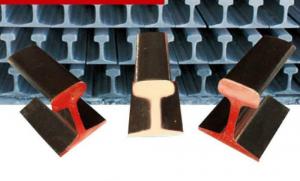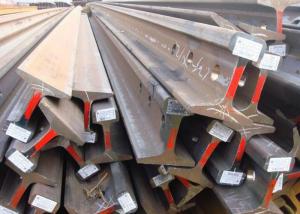Milled Steel Light Rails in High Quality
- Loading Port:
- China Main Port
- Payment Terms:
- TT or LC
- Min Order Qty:
- 50 m.t.
- Supply Capability:
- 5000 m.t./month
OKorder Service Pledge
OKorder Financial Service
You Might Also Like
Product Description:
OKorder is offering Milled Steel Light Rails in High Quality at great prices with worldwide shipping. Our supplier is a world-class manufacturer of steel, with our products utilized the world over. OKorder annually supplies products to African, South American and Asian markets. We provide quotations within 24 hours of receiving an inquiry and guarantee competitive prices.
Product Applications:
Milled Steel Light Rails in High Quality are ideal for structural applications and are widely used in forest region, Mines, factories and construction sites laid of the place such as temporary transport line and light motorcycles with line.etc.
Product Advantages:
OKorder's Milled Steel Light Rails in High Quality are durable, strong, and wide variety of sizes.
Main Product Features:
· Premium quality
· Prompt delivery & seaworthy packing (30 days after receiving deposit)
· Mill test certification
· Professional Service
· Competitive pricing
Product Specifications:
Manufacture: Hot rolled
Grade: Q235, 55Q
Certificates: ISO, SGS, BV, CIQ
Length:6m, 12m,12.5m
Package: Packed in bundles and shipped by break bulk or containers.
LIGHT RAIL/HEAVY RAIL | Height (mm) | Bottom (mm) | Head width (mm) | Head height (mm) | Waist height | Bottom height (mm) | Waist thichness (mm) | Section cm2 | Mass: Kg/m |
9 | 63.50 | 63.50 | 32.10 | 17.48 | 35.72 | 10.30 | 5.90 | 11.30 | 8.94 |
12 | 69.85 | 69.85 | 38.10 | 19.85 | 37.70 | 12.30 | 7.54 | 15.54 | 12.2 |
15 | 79.37 | 79.37 | 42.86 | 22.22 | 43.65 | 13.50 | 8.33 | 19.33 | 15.2 |
22 | 93.66 | 93.66 | 50.80 | 26.99 | 50.00 | 16.67 | 10.72 | 28.39 | 22.3 |
30 | 107.95 | 107.95 | 60.33 | 30.95 | 57.55 | 19.45 | 12.30 | 38.32 | 30.1 |
FAQ:
Q1: How many tons of steel products could be loaded in containers?
A1: Usually the steel products are delivered by bulk vessel because of the large quantity and the freight. However, there are no bulk vessel enter some seaports so that we have to deliver the cargo by containers. The 6m steel product can be loaded in 20FT container, but the quantity is changed according to the size, usually from 18tons to 25tons.
Q2: Why buy Materials & Equipment from OKorder.com?
A2: All products offered byOKorder.com are carefully selected from China's most reliable manufacturing enterprises. Through its ISO certifications, OKorder.com adheres to the highest standards and a commitment to supply chain safety and customer satisfaction.
Q3: How soon can we receive the product after purchase?
A3: Within three days of placing an order, we will arrange production. The normal sizes with the normal grade can be produced within one month. The specific shipping date is dependent upon international and government factors, the delivery to international main port about 45-60days.
Images:
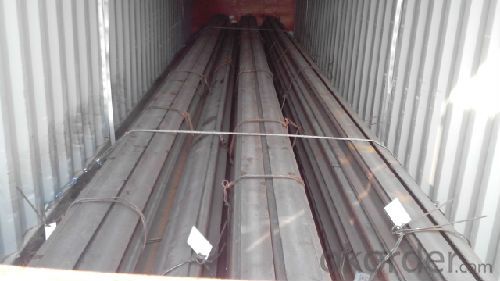
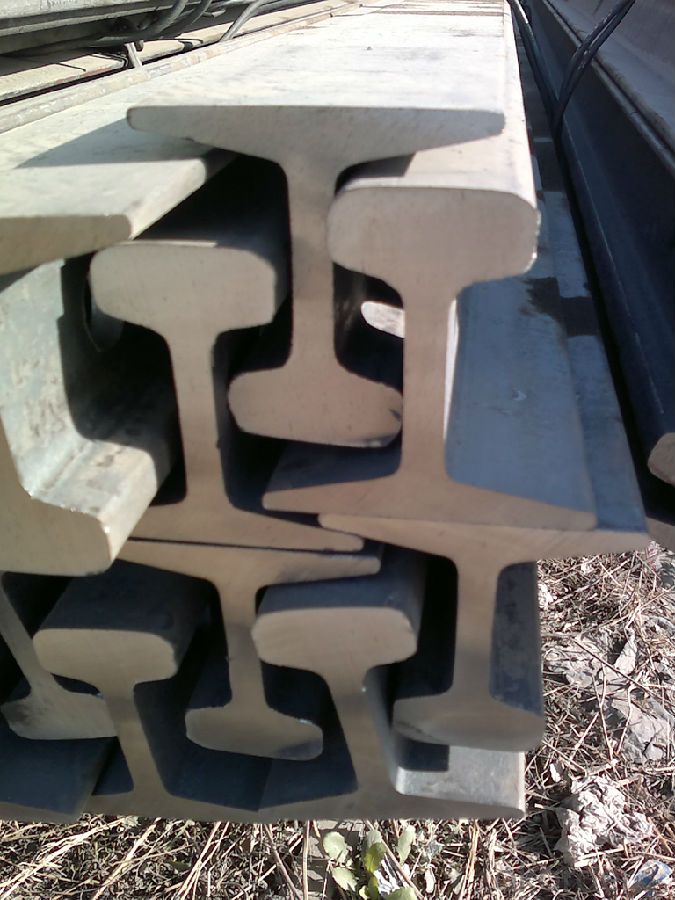
- Q: What are the different types of rail crossings used with steel rails?
- There are mainly three types of rail crossings used with steel rails: level crossings, grade crossings, and pedestrian crossings. Level crossings are used to intersect roads or highways at the same level as the railway tracks. Grade crossings, on the other hand, involve a slight incline or decline where the road crosses the tracks. Pedestrian crossings are designed specifically for pedestrians to safely cross the railway tracks.
- Q: How do steel rails handle different types of train speeds?
- Steel rails are designed to handle different types of train speeds efficiently and safely. The strength and durability of steel allow it to withstand the immense forces and pressures exerted by trains traveling at varying speeds. The smooth surface of steel rails provides a stable and low-friction track for trains, enabling smooth and controlled movement at both high and low speeds. Additionally, steel rails are regularly maintained and inspected to ensure their integrity and performance, further ensuring their ability to handle different train speeds.
- Q: How are steel rails affected by snow or ice accumulation?
- Snow and ice buildup can have a significant impact on the steel rails. Firstly, when the rails are covered in snow or ice, it can greatly reduce the traction between the train wheels and the tracks. This lack of traction makes it difficult for trains to maintain a firm grip, potentially leading to slippage. As a result, train speeds decrease, braking distances become longer, and dangerous situations may arise. Moreover, the accumulation of snow or ice on the rails can create uneven surfaces. When trains pass over these irregularities, vibrations occur, causing discomfort for passengers and accelerating the wear and tear on both the rails and train components. In extreme cases, derailments or damage to the train's undercarriage can occur due to the presence of ice or snow. Additionally, snow and ice can also impact the signaling systems on the railways. When snow or ice accumulates, it can block or impair the visibility of signals, making it challenging for train operators to accurately interpret them. This, in turn, can lead to safety hazards. To combat these issues, rail operators implement various measures. For example, they may utilize snowplows or snowblowers to clear the tracks of snow, or they may apply de-icing agents to prevent the formation of ice. Additionally, rail operators often increase the frequency of inspections during snowy or icy conditions to promptly identify and address any potential problems. In conclusion, the accumulation of snow and ice poses significant challenges for steel rails, including reduced traction, uneven surfaces, potential derailments, and impaired signaling systems. Consequently, rail operators take proactive steps to prevent or minimize these effects, ensuring the safe and efficient operation of trains during winter weather conditions.
- Q: How are steel rails protected from damage caused by floods?
- Steel rails are typically protected from damage caused by floods through several measures. One common approach is to elevate the tracks above the flood level, using embankments or elevated structures. Additionally, drainage systems are implemented to ensure that excessive water is quickly removed from the tracks. Regular inspections and maintenance are conducted to identify any potential damage or erosion caused by flooding, and swift repairs are carried out to prevent further deterioration. Overall, a combination of preventive measures and proactive maintenance helps safeguard steel rails from flood-related damage.
- Q: What are the safety precautions taken during steel rail welding?
- To ensure the safety of workers during steel rail welding and prevent accidents and injuries, various safety precautions are taken. Some of the important safety measures implemented during this process are: 1. Personal Protective Equipment (PPE): Workers are supplied with and must wear appropriate PPE, including welding helmets, safety glasses, flame-resistant clothing, gloves, and steel-toed boots. This protective gear helps protect against sparks, heat, UV radiation, and potential injuries. 2. Ventilation: It is crucial to have sufficient ventilation to remove fumes, gases, and smoke generated during welding. Adequate ventilation systems, such as exhaust fans or local exhaust ventilation, are installed to maintain a safe and breathable work environment. 3. Fire Prevention: Welding produces intense heat, sparks, and molten metal, creating a high risk of fire. To minimize this risk, fire extinguishers, fire blankets, and fire-resistant barriers are readily available and regularly checked. Additionally, all flammable materials are removed from the welding area. 4. Welding Screens and Curtains: Flame-resistant screens or curtains are used to create barriers and protect nearby workers from harmful radiation, sparks, and potential eye injuries. 5. Grounding and Isolation: Proper grounding of welding equipment and isolation from nearby flammable materials are crucial to prevent electrical shocks and fires. This is achieved by connecting the welding machine to a grounded power source and ensuring all cables and connections are insulated and in good condition. 6. Training and Certification: Welders must undergo comprehensive training and obtain relevant certifications to ensure they are skilled in safe welding practices. They are trained to identify hazards, handle equipment safely, and respond appropriately to emergencies. 7. Regular Equipment Maintenance: Welding equipment is regularly inspected, maintained, and serviced to ensure safe and efficient operation. Any damaged or faulty equipment is promptly repaired or replaced to prevent accidents. 8. Risk Assessment and Job Planning: Before starting any welding work, a thorough risk assessment is conducted to identify potential hazards and determine appropriate safety measures. Adequate job planning includes considering factors such as weather conditions, visibility, and the presence of other workers. By implementing these safety precautions, the risks associated with steel rail welding can be minimized, creating a safer working environment for welders and reducing the likelihood of accidents and injuries.
- Q: Are steel rails used in freight trains?
- Freight trains commonly employ steel rails, which offer the essential strength and durability required to bear the weight and steady motion of heavy loads. These rails are engineered to endure the immense pressure and wear generated by the train's weight and the continuous rotation of its wheels. By utilizing steel rails, the railway system guarantees the secure and efficient transportation of freight trains over vast distances, establishing them as a fundamental element of the railway infrastructure.
- Q: Can steel rails be used in elevated railway tracks?
- Yes, steel rails can be used in elevated railway tracks. In fact, steel is commonly used in the construction of railway tracks due to its strength, durability, and ability to withstand heavy loads. Whether the tracks are at ground level or elevated, steel rails provide a sturdy foundation for trains to travel on.
- Q: What are the dimensions of steel rails?
- The dimensions of steel rails vary depending on the specific application and standard being followed. However, commonly used dimensions for standard railroad tracks include a length of 39 feet and a weight per yard of 115 pounds.
- Q: Can steel rails be used in heavy haul railway operations?
- Yes, steel rails can be used in heavy haul railway operations. Steel rails are the most common type of track material used in railway systems worldwide, including heavy haul operations. Steel rails offer several advantages that make them suitable for heavy haul operations. Firstly, steel rails have high strength and durability, which allows them to withstand the heavy loads and frequent traffic associated with heavy haul operations. They can support the weight of heavy freight trains and endure the constant impact and wear caused by the movement of trains. Secondly, steel rails have excellent resistance to fatigue, which is crucial in heavy haul operations where trains travel long distances at high speeds. Fatigue resistance ensures that the rails can withstand the repeated stress and strain cycles caused by the passage of heavy trains without developing cracks or fractures. Additionally, steel rails have good thermal stability, meaning they can expand and contract with temperature changes without significant deformation. This is important in heavy haul operations where trains may be subjected to extreme temperature variations, as it helps to maintain the integrity and stability of the track structure. Moreover, steel rails can be manufactured to precise specifications, ensuring uniformity and consistency throughout the railway network. This standardization allows for smooth and safe operations, reducing the risk of derailments or track failures. Overall, steel rails have proven to be reliable and effective in heavy haul railway operations due to their strength, durability, fatigue resistance, thermal stability, and standardized manufacturing.
- Q: How are steel rails tested for durability?
- Steel rails are tested for durability through a series of rigorous tests that assess their strength, resistance to wear and tear, and their ability to withstand heavy loads. These tests involve evaluating the steel's hardness, toughness, and fatigue resistance, as well as conducting impact and bending tests. Additionally, rails are subjected to simulated track conditions, such as continuous rolling contact fatigue tests, to ensure their long-term durability and reliable performance under real-world operating conditions.
Send your message to us
Milled Steel Light Rails in High Quality
- Loading Port:
- China Main Port
- Payment Terms:
- TT or LC
- Min Order Qty:
- 50 m.t.
- Supply Capability:
- 5000 m.t./month
OKorder Service Pledge
OKorder Financial Service
Similar products
Hot products
Hot Searches
Related keywords



